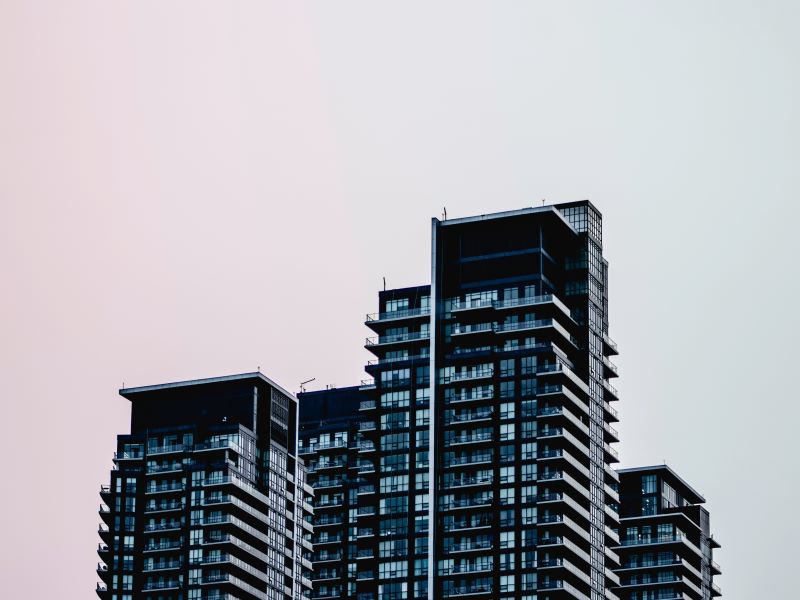Can a Condo Burn Down?
 Written By Robert Van Rhijn
Written By Robert Van Rhijn I field a lot of different questions when I’m showing a listing or working with clients. “Can a condo burn down?” certainly isn’t one of them… Although I thought it would be fun to explore the subject.
The Most Famous Case: Grenfell Tower Fire
One of the worst residential building fires in recent memory would have to be the Grenfell Tower fire on June 14th, 2017, which resulted in the deaths of 72 people. For many of us in Toronto, witnessing the Grenfell Tower burning on international news hit very close to home.
In this specific case, the fire began in a kitchen in flat 16 on the 4th floor; firefighters were noted to have responded within minutes of reporting — as shown in this BBC Article, they arrived in roughly 5 minutes. What would only become clear later, was that the fire had spread to the cladding before the firefighters even entered the unit, and from there it subsequently raced up the sides of the tower.
In comparing the Grenfell Tower fire to significant fires in Toronto condos, it’s clear that a lot of the conditions that caused the fire to spread aren’t present here.
The building’s policy was for residents to remain in place in case of a fire — a policy that relies on units functioning as containers in the event of a fire... But it wasn’t the policy that ultimately led to the fire becoming so devastating — that same policy is recommended by Toronto Fire District Chief Peter Derrington here if residents feel they cannot safely evacuate a building — it was the presence of combustible material used in construction, known as polyethylene polymer. While there are a number of building materials that prevent the spread of fire, this polymer is incredibly combustible, and it helped the fire grow.
Other factors included combustible insulation, a smoke extraction system that wasn’t functioning, doors that didn’t meet fire standards, and a water system that was woefully underpowered. In the end, Grenfell Tower was a dated building that didn’t meet current fire codes, and even the parts of the building that had been refurbished weren’t adequate. As a result, the building utterly failed to contain what should have been an isolated incident.
Why Toronto condos don’t burn down

In comparing the Grenfell Tower fire to significant fires in Toronto condos, it’s clear that a lot of the conditions that caused the fire to spread aren’t present here. Many will remember the 6-alarm blaze at 650 Parliament St in August 2018 — though it displaced 1500 residents and has caused plenty of headaches for those residents, there wasn’t a single casualty.
The damage to 650 Parliament St was substantial, but the fire didn’t manage to spread to the exterior, which likely prevented it from engulfing the building. One of the main reasons why buildings in the GTA don’t burn down is that they all must follow The Fire Protection and Prevention Act of 1997. The act itself is so extensive that if I even attempted to cover it most of you would fall asleep. But The Fire Prevention Act of 1997, in essence, outlines a wide range of issues from building requirements to fire safety and even outlines conditions for retrofitting a dated property. These guidelines are strict, and the fines and punishments for ignoring them are significant.
Building materials are extremely important, and the combination of concrete and fire retardant materials in Toronto condos has been integral to containing fires, along with the efforts of first responders. Cladding is as much a tool for weather-proofing as it is for fire resistance, and it’s usually made up of a metallic liner and a polymer; the polymer is what provides fire resistance.
Regulations in Canada dictate that cladding in buildings above 4 storeys must have a minimum fire rating of one to two hours — meaning that it could resist catching fire for that period of time, allowing for residents to easily evacuate a building if needed.
In fact, Canadian regulators have even homed in on combustible furniture in lounges and lobby’s, further reducing the risk of a fire spreading. Condo residents in Toronto can have peace of mind knowing that many modern condos now have multiple sprinklers in every unit, and even older buildings have sprinklers in hallways, with strict water pressure requirements.
In other words — even Daenerys’ fire breathing dragons would struggle to melt a Toronto condo.
How to Protect Yourself
As a condo resident, you’re dependent on proper construction and building management, but there are things you can do to keep yourself safe from fire. Regularly checking smoke and CO alarms, avoiding furniture that’s made from combustible materials, checking fire extinguishers, and above all, enquiring about the standards and policies employed at a building.
You can rest assured knowing that condo developers are held to a very high standard, but it never hurts to ask.
Starting your search for a new home? Click on any of these links to access active listings, sold listings or contact a Strata agent.
For any questions about this article or media inquires, please email media@strata.ca

